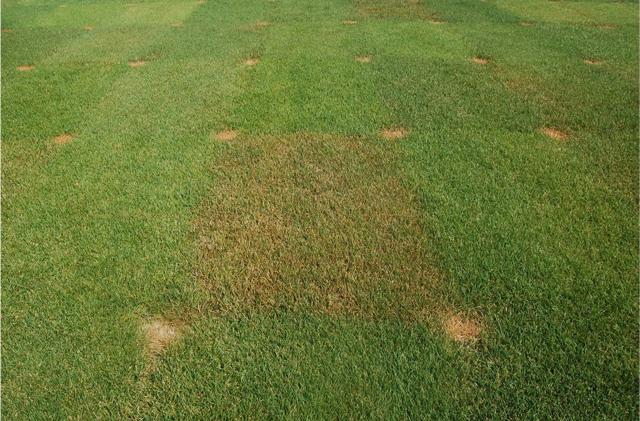
Published
30 .Mar.2020The Curse of the Orange Shoe
Rust diseases in turfgrass, while usually more cosmetic than lethal, cause considerable concern for turf managers (red to orange spores on shoes and other things).
The two main species where rust diseases are a problem are Kentucky bluegrass (Poa pratensis) and perennial ryegrass (Lolium perenne). The rust tends to occur when the grass is growing slowly due to time of year, low nitrogen, soil compaction, low light or other stresses. Kentucky bluegrass is infected by crown rust (Puccinia coronate), stem rust (Puccinia graminis) and leaf rust (Puccinia poarum). Perennial ryegrass is primarily infected by stem and crown rust.
Genetic resistance to a pathogen is one of the best ways to combat it. Many new perennial ryegrass cultivars show improved resistance to crown rust, stem rust or both compared to older cultivars. These improvements are in addition to improved turf quality and resistance to gray leaf spot (Pyricularia grisea). Cultivars with excellent resistance to both crown and stem rust include Karma, Banfield, Stamina, Thrive and Diligent. Wicked has high resistance to both diseases. Aspire and Bandalore have excellent crown rust resistance.
Cultivar resistance can be combined with management to improve your stand. Utilizing mixtures with cultivars that have resistance helps avoid plant to plant movement of the disease. Interseed with improved cultivars for long term improvement of an existing turf stand. Additional measures to fight these diseases include increasing your fertility, relieving compaction, and reducing hours of leaf wetness by irrigating early in the morning.
Together we can combat the curse of the orange shoe.
